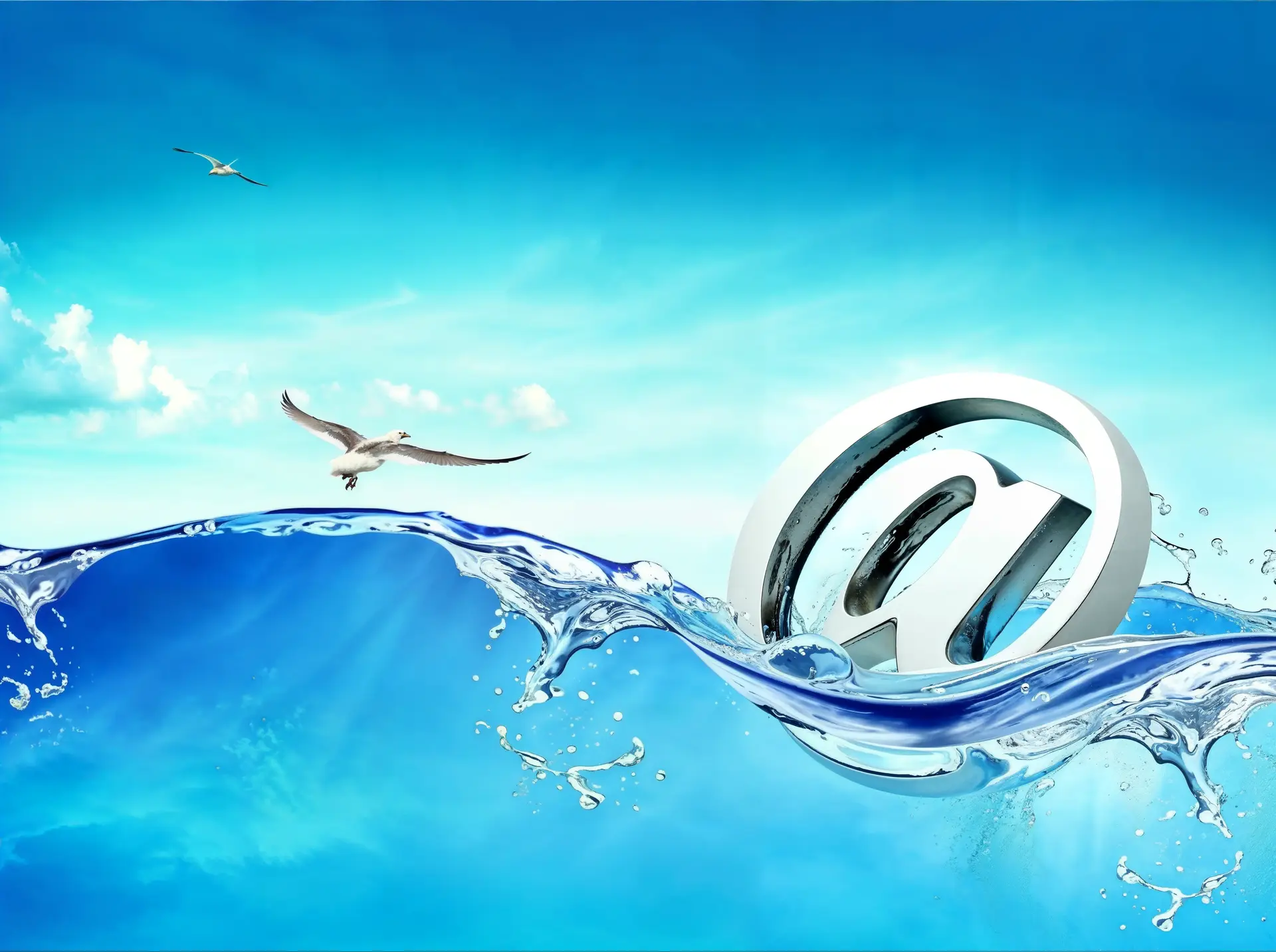Frutiger Aero Aesthetic
Frutiger Aero, also referred to as Web 2.0 Gloss, was a widespread design style
that dominated various fields, including advertising, media, stock imagery, and technology, from approximately 2004
to 2013. Emerging after the Y2K aesthetic, Frutiger Aero is
distinguished by its extensive use of skeuomorphism,
glossy textures, vibrant color palettes (especially greens and blues), and nature-inspired elements such as cloudy
skies, tropical fish, water, and bubbles. The aesthetic also features lens flares, bokeh effects, Abstract Tech patterns, aurora-inspired gradients, and the frequent use of the Frutiger typeface.
Enter the Frutiger Aero realm and discover everything about this aesthetic on frutiger-aero.org.
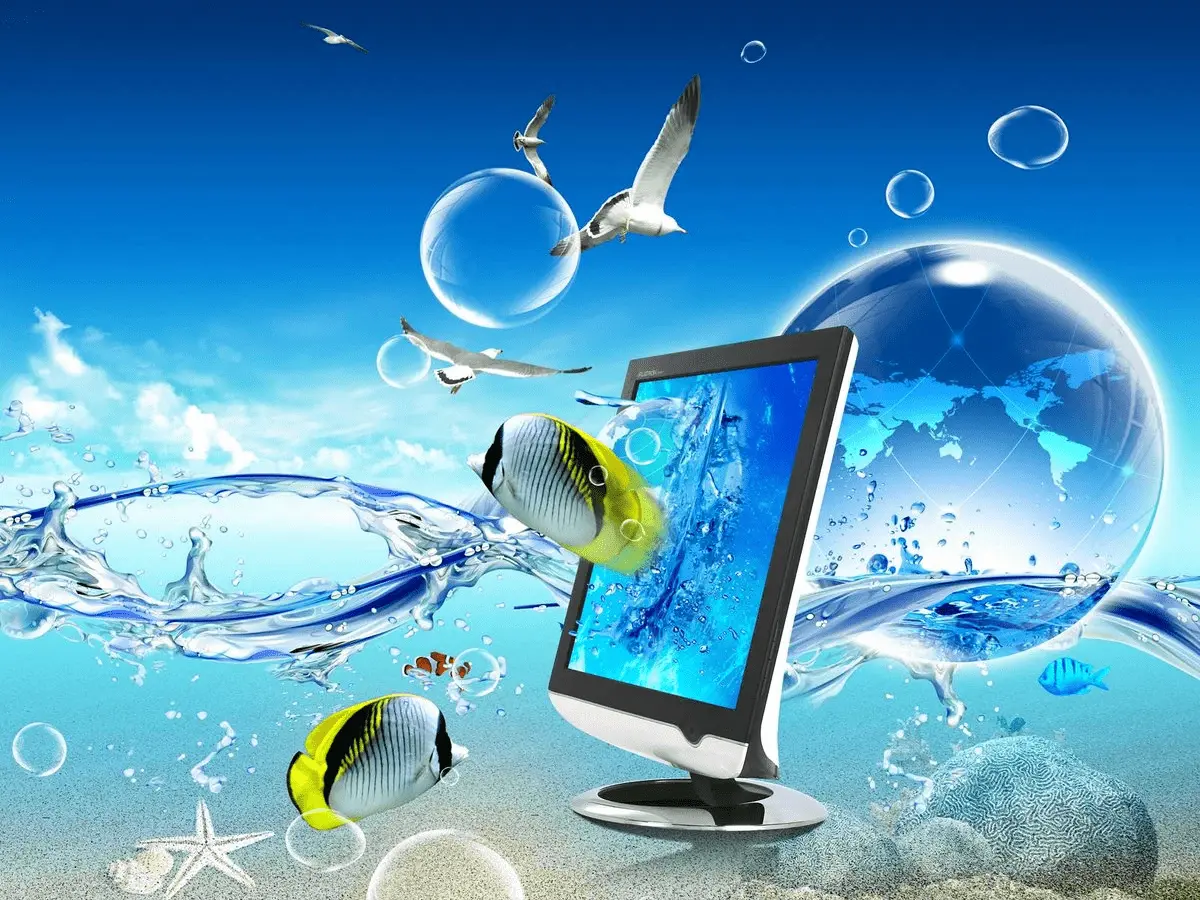
Initially, this design style lacked a specific name and was more closely associated with individual styles (e.g., Windows Aero, iOS's skeuomorphic icons, and the visuals of
Mirror's Edge and Spore) rather than a broader aesthetic category. During its peak, some referred to it as
"Web 2.0 Gloss," but this term primarily described glossy interface elements rather than the
overall aesthetic. The term "Frutiger Aero" was introduced in 2017 by Sofi Lee of the Consumer Aesthetics Research Institute and gained significant traction in
2022, leading to a renewed interest in the aesthetic.

Frutiger Aero encompasses a variety of sub-aesthetics and related aesthetics, such as
Frutiger Metro, Technozen,
Frutiger Eco, and Helvetica Aqua Aero. The name
"Frutiger Aero" is derived from two key influences: the Frutiger typeface, created by Adrian Frutiger and commonly
used in Frutiger Aero designs, and the Windows Aero interface, introduced in Windows Vista and Windows 7, which
played a significant role in popularizing the aesthetic's glossy, translucent appearance.
The Development and Progression of Frutiger Aero
Early Influences (2001-2004)
The origins of Frutiger Aero can be traced back to the early builds of Microsoft's Windows Longhorn (later released as Windows Vista) and the skeuomorphic design language of
Mac OS X, which drew inspiration from early versions of iMovie. As the world transitioned from the Y2K era, marked
by events such as the Dot-com Bubble
Burst, the September 11th Attacks, and the
War on Terror, Frutiger Aero began to emerge as a fresh,
optimistic design language that reflected the changing cultural landscape of the early 2000s.
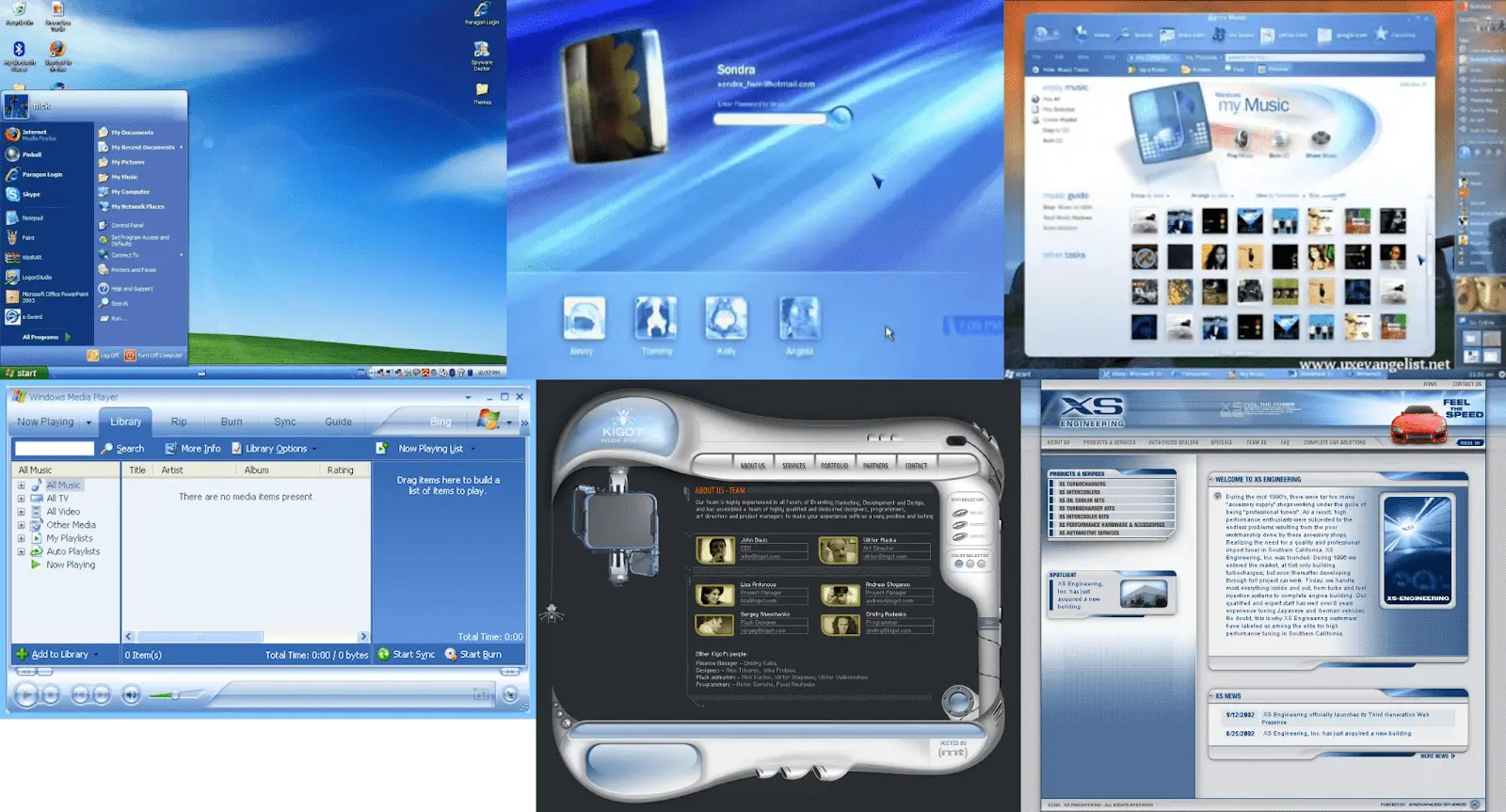
Widespread Adoption (2004-2007)
Frutiger Aero gained significant recognition and adoption starting in late 2004, with the release of Windows Media
Player 10, the Seventh Generation
of Video Game Consoles (including the PlayStation Portable and its XrossMediaBar interface), Apple's iconic
iPod "Silhouette" advertising campaign (Funky
Seasons), and the rise of Web 2.0 design trends.
The aesthetic's popularity continued to grow in 2005 and 2006, with the release of Windows XP Media Center Edition
2005, Longhorn Build 5048 (the first build with a fully Aero-enabled UI), Windows Vista Beta 1, the Xbox 360 (with its Blades Dashboard), Nintendo DS Lite, PlayStation 3, and Nintendo Wii. By 2007, with the launch of Windows Vista, the first-generation iPhone (running iPhone OS 1.0), and Mac OS X Leopard (10.5), Frutiger Aero had firmly
established itself as the dominant design aesthetic of the era.
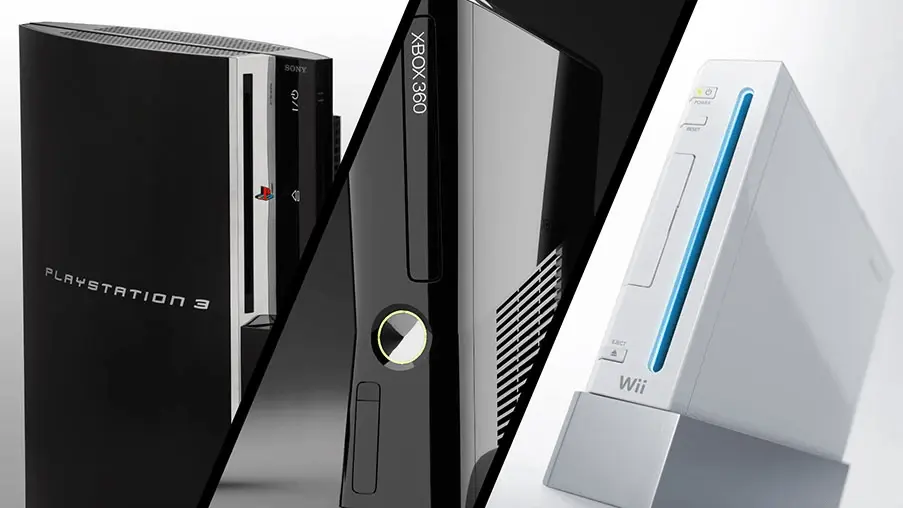
The Pinnacle of Influence (2007-2012)
From 2007 to 2012, Frutiger Aero reached its zenith of influence, permeating nearly every aspect of visual culture.
The aesthetic served as a more refined, corporate-friendly evolution of the Y2K aesthetic, featuring similar bright,
glossy, and futuristic elements. During this period, Frutiger Aero also intersected with other popular aesthetics,
such as McBling, Surf Crush, and ElectroPop 08, leading to the emergence of various
sub-aesthetics under the ever-expanding Frutiger Umbrella.
Waning Popularity and Resurgence (2012-present)
The rise of Flat Design in the early 2010s marked the beginning of Frutiger Aero's decline. In 2012, the skeuomorphic
look of Frutiger Aero (as seen in Windows 7)
started to fade in favor of the Flat Design look (as exemplified by Windows 8 and Windows 10). Nintendo's Wii U (2012) was the last video game console to fully embrace
Frutiger Aero, but its commercial failure further contributed to the aesthetic's decline.
By 2013, with the release of iOS 7 and the growing popularity of
minimalist design trends, Frutiger Aero had largely fallen out of favor. The emergence of Corporate Memphis in 2017 further solidified the
shift away from Frutiger Aero's skeuomorphic, glossy style. However, the aesthetic has experienced a resurgence in
recent years, driven by nostalgia and a growing appreciation for its unique visual language. The hashtag #frutigeraero has garnered over 30 million views on
TikTok, and even Microsoft has acknowledged the aesthetic's legacy in a TikTok post on their official account.
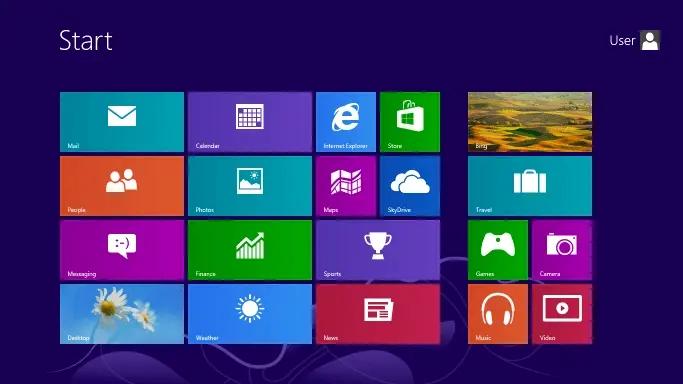
Revival and Neo-Aero (2022-present)
The term "Frutiger Aero" was coined by Sofi Lee of the Consumer
Aesthetics Research Institute in 2017, leading to a gradual increase in interest in the aesthetic. Since
late 2022, it has experienced a revival through TikTok videos driven by nostalgia, with the hashtag #frutigeraero being used over 30 million times, and on Reddit with the subreddit r/FrutigerAero that has more than 50,000 members.

In August 2023, a TikTok post specifically about the aesthetic was
shared on the official Windows TikTok account. Furthermore, some believe Windows 11 is related to Frutiger
Aero or contains a successor-aesthetic (Glassmorphism), as evident in promotional materials.
On Ukrainian Wikipedia, a comprehensive article has
appeared describing Frutiger Aero, including its history, visuals, and list of uses. In the "Legacy" section of the Windows Aero Wikipedia article, Frutiger
Aero is recognized as having existed, featuring a brief description of the aesthetic's visuals and
history.
Aero's revival mirrors the Y2K resurgence, a trend that has been ongoing since the mid-late 2010s. Given this Neo-Y2K
phenomenon, it is plausible that a "Neo-Aero" movement is currently underway or will emerge in the
future, exemplifying the "20-year nostalgia cycle" as Frutiger Aero began triggering mass nostalgia approximately 18
years after its emergence.
Essential Visual Characteristics
Frutiger Aero user interfaces often incorporate linear gradients, bloom and glow effects, and a glossy sheen on many
elements to create a sense of depth and realism. At first glance, Frutiger Aero visuals can be mistaken for the Y2K
aesthetic, but the primary difference lies in the higher-definition visuals and more sophisticated 3D graphics
compared to most Y2K imagery (largely due to Frutiger Aero emerging just as HD video began to gain popularity).
Frutiger Aero visuals somewhat lack the "anything goes" mentality often associated with the Y2K aesthetic (e.g., the "Green Head" of Windows ME's Media Player), opting for a more
refined look. The Frutiger Aero aesthetic is often considered the "halfway point" between the busyness of the Y2K
era and the minimalism of the Flat Design/Corporate Memphis era.
Common motifs associated with Frutiger Aero include skeuomorphism, glossy textures, "humanism," nature-inspired
elements, bokeh, bubbles, Frutiger fonts, glass, and auroras. Some Frutiger Aero
designs prominently feature the color blue to mimic the ocean or to resemble Abstract Tech, while others adopt a
green, more nature-oriented approach.
Sub-Aesthetics and Related Styles
The Frutiger era encompassed the zeitgeist from the mid-2000s (2004) to the early 2010s (2013).
Frutiger Aero and its related aesthetics and
subgenres dominated advertising, stock imagery, technology, web design, branding, and media during its
mainstream period. The Frutiger era succeeded the Y2K era and preceded the Flat Design era, often
considered the middle ground between the two. Frutiger Aero itself is increasingly broad, leading the internet to
assign subcategories to better understand its intricacies.
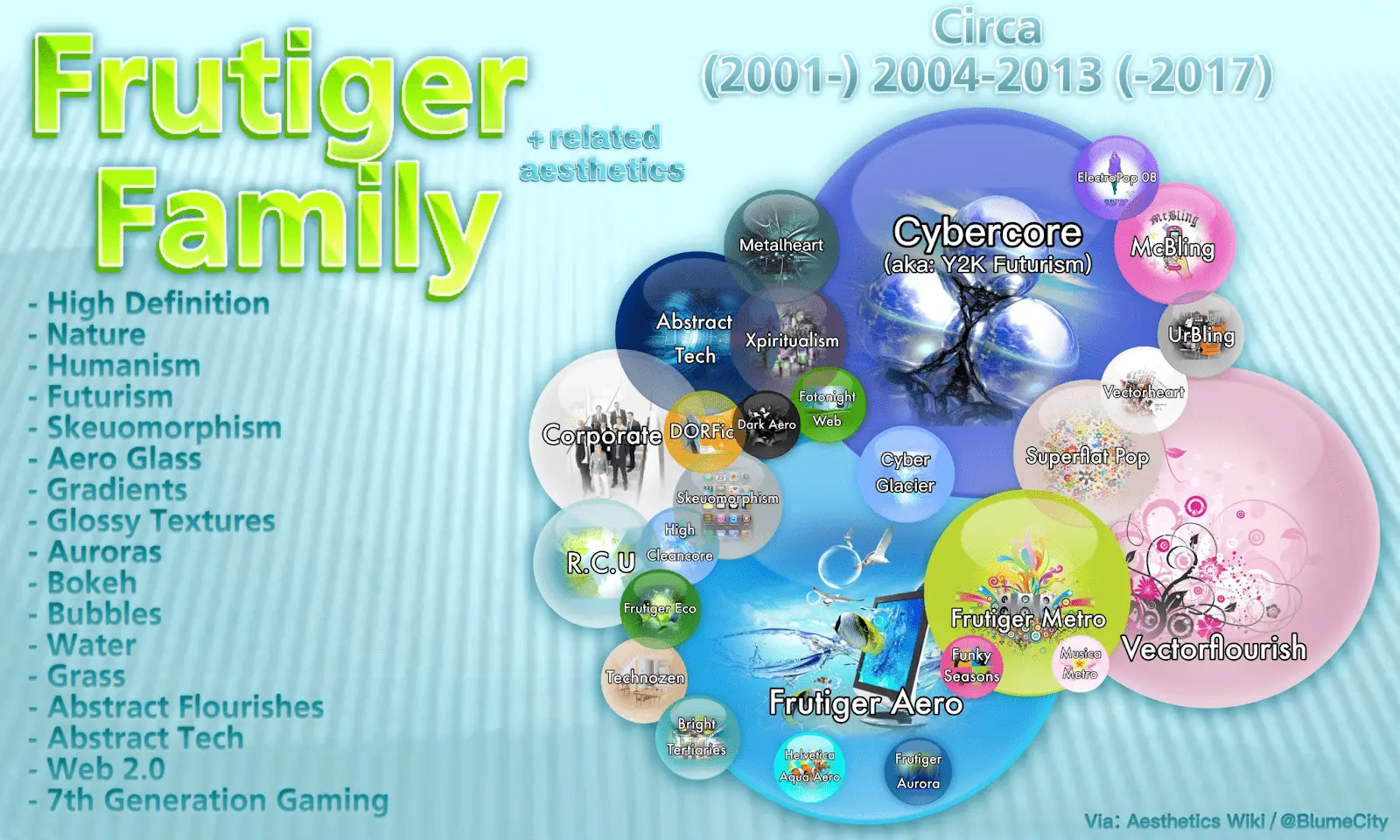
Sub-Aesthetics

Frutiger Eco is a broad sub-aesthetic of Frutiger Aero that focuses on renewable energy, living in
harmony with nature, and incorporating futuristic themes and architecture centered around sustainability. It was
prevalent in images, advertising, and graphic design of the mid-2000s and early 2010s, aiming to raise awareness of
climate change while encouraging optimism through visuals portraying an eco-friendly and advanced utopian future.
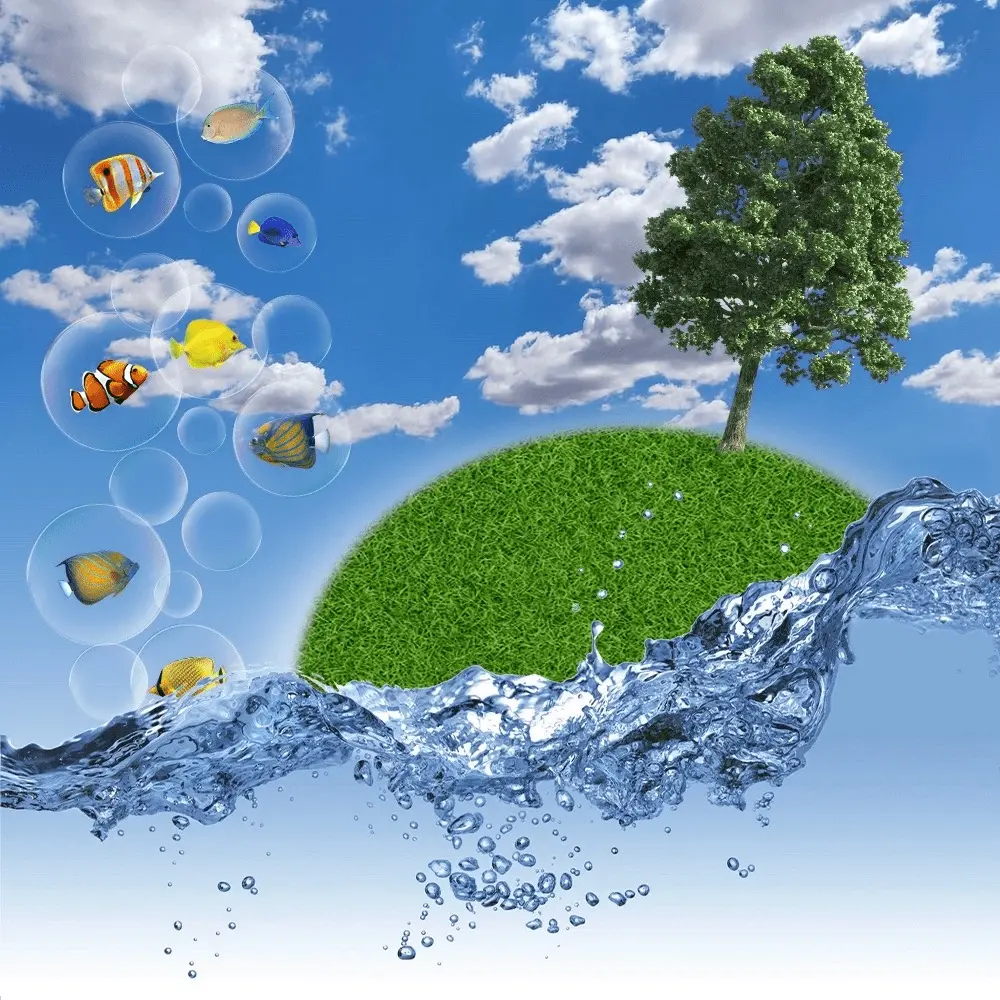
Helvetica Aqua Aero (also known as Frutiger Aqua, Aquacore,
Low Frutiger, or simply Helvetica Aqua) is a Frutiger Aero and Y2K sub-aesthetic
characterized by its use of imagery related to the sea, the ocean, and beaches. It combines aquatic elements with
shared aspects of Y2K and Frutiger Aero, such as gloss, futurism, 3D rendered objects, early 2000s imagery, and
gradients. Due to this, it is considered the halfway point between Y2K (1997-2004) and Frutiger Aero (2004-2013).
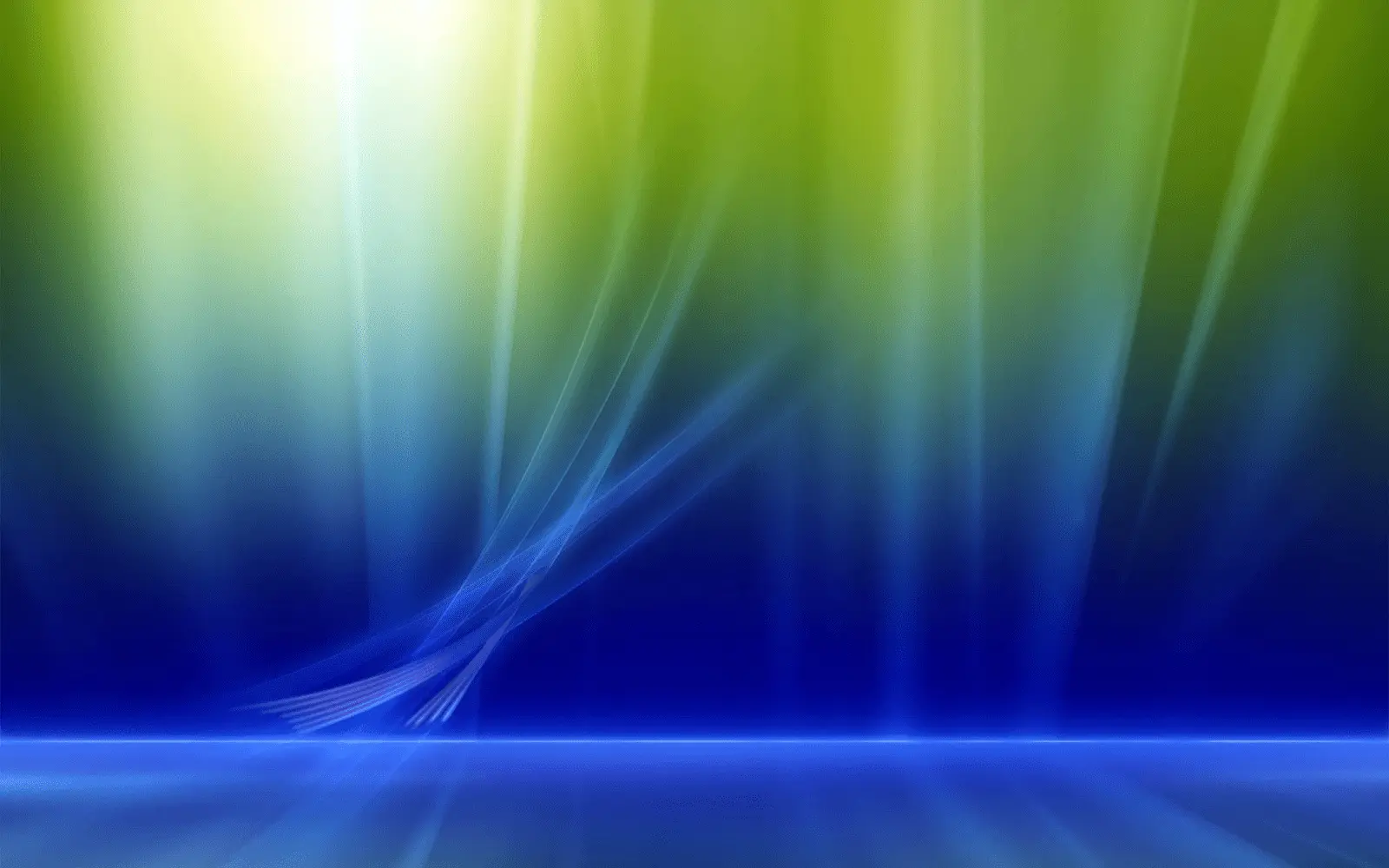
Frutiger Aurora is a subgenre of Frutiger Aero that focuses on the aurora visual—a
natural light display in Earth's sky, predominantly seen in high-latitude regions around the Arctic and Antarctic.
Frutiger Aurora emerged in the early 2000s towards the end of the Y2K era and maintained its popularity into the
early 2010s.
![]()
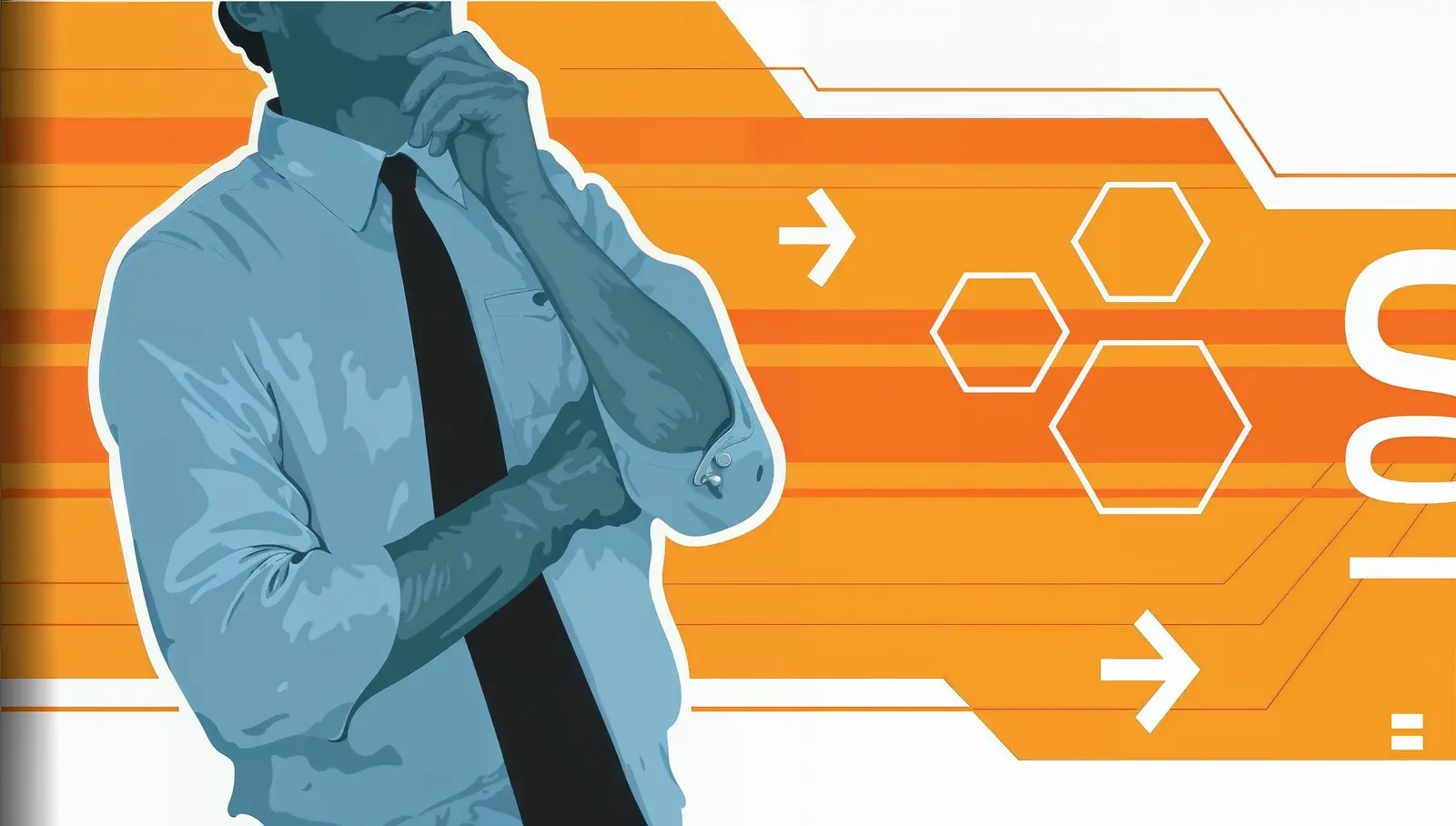
DORFic (also known as Sunshine Polypunk or PolySunk) is an
aesthetic featuring Abstract Tech-esque minimalist imagery that was popular from the mid/late-2000s to the
mid-2010s. DORFic is an acronym for daylight, orange, futurism, and the last four letters of the word "graphic"
(simplified to "Fic"). This aesthetic is a subgenre of Frutiger Aero and Abstract Tech, and can be
compared to Stecffism (Frutiger Eco
subgenre) due to their shared corporate elements.
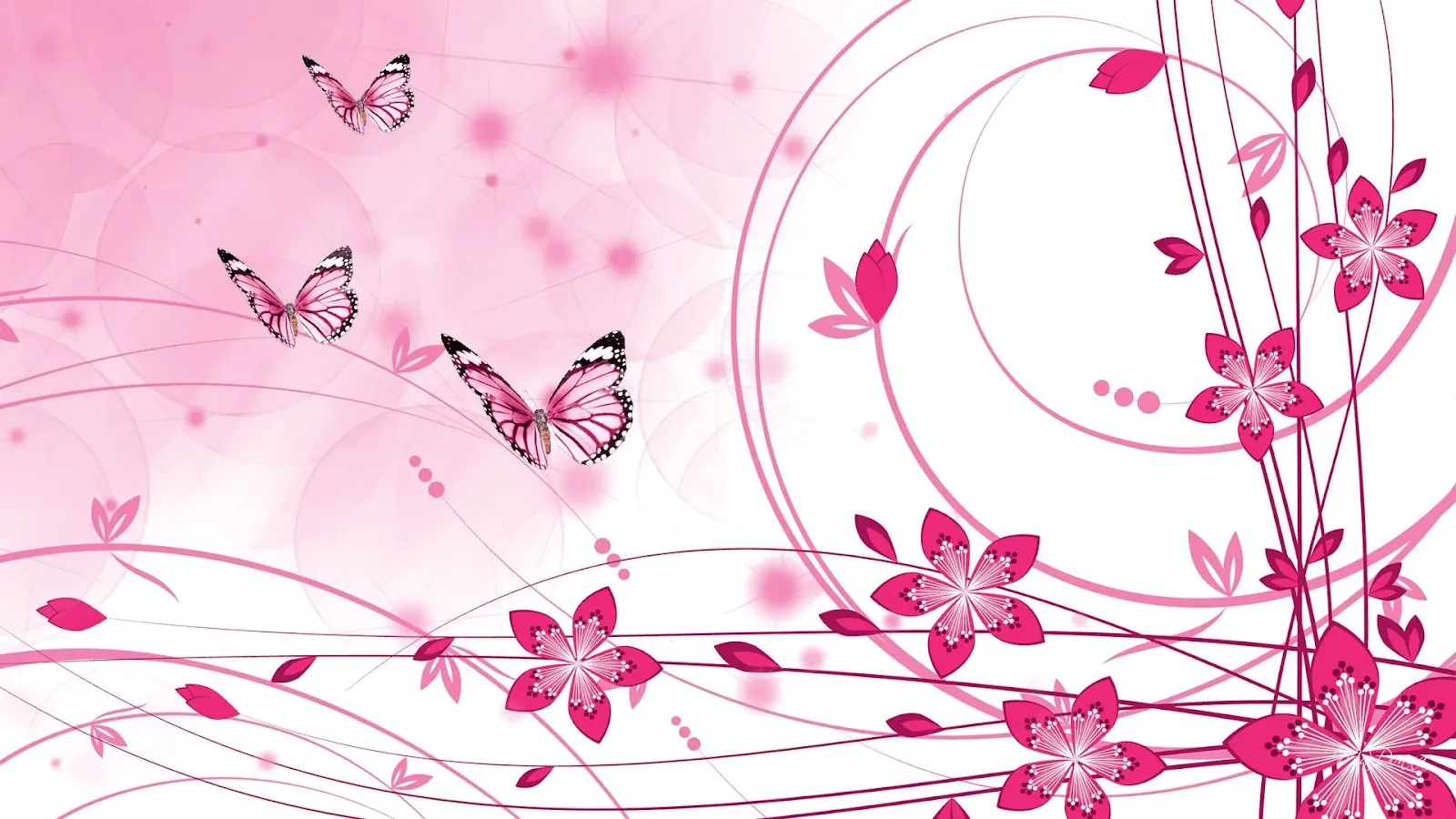
Vectorgarden (formerly known as Floral Metro) is a subgenre of Vectorflourish, Frutiger Aero, and Frutiger Metro.
It is characterized by minimalist a

